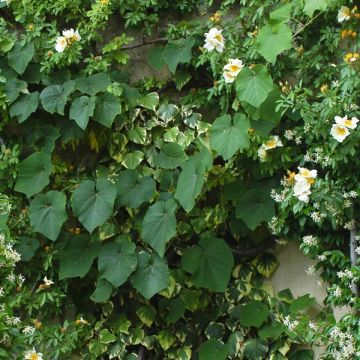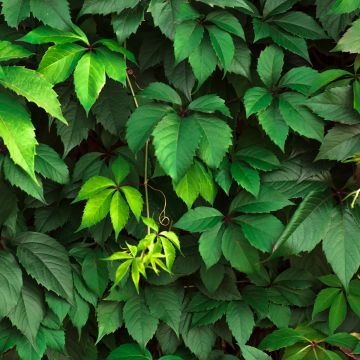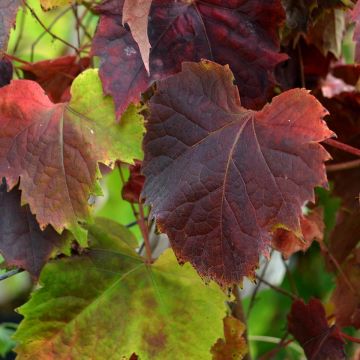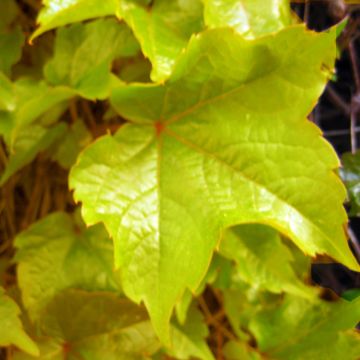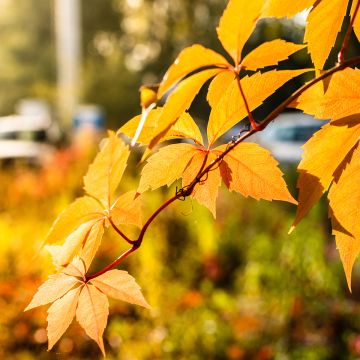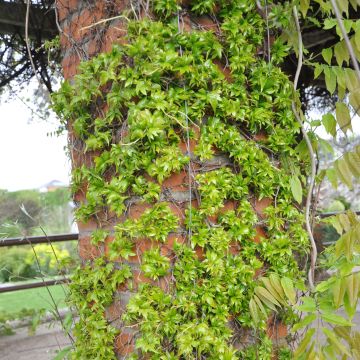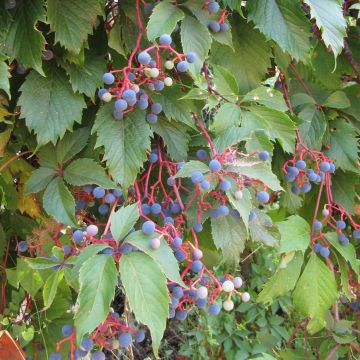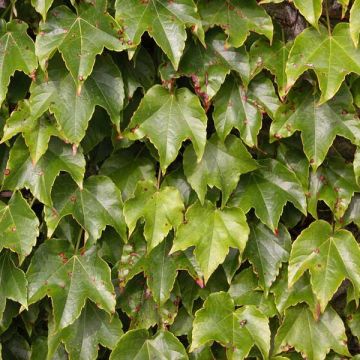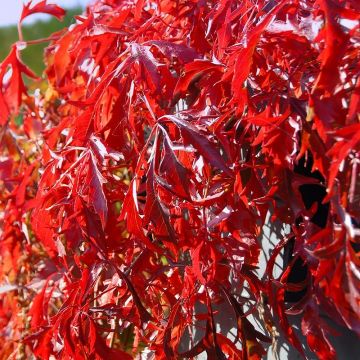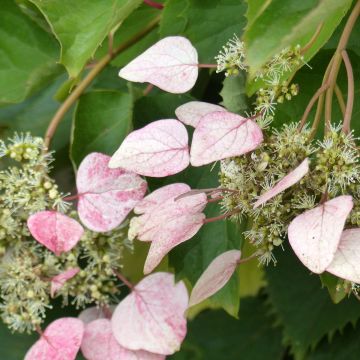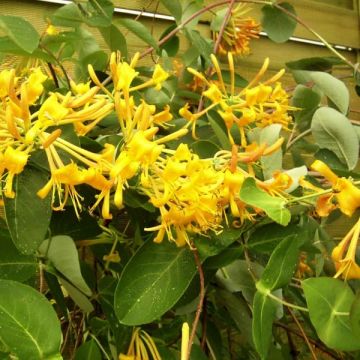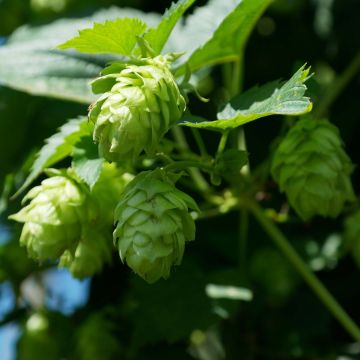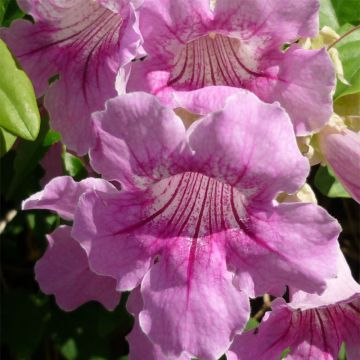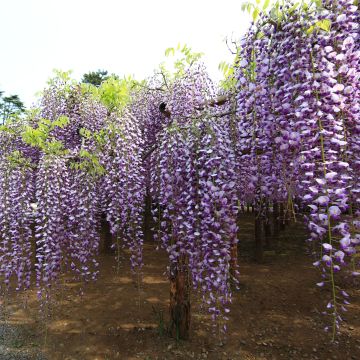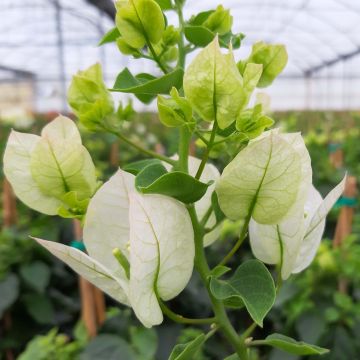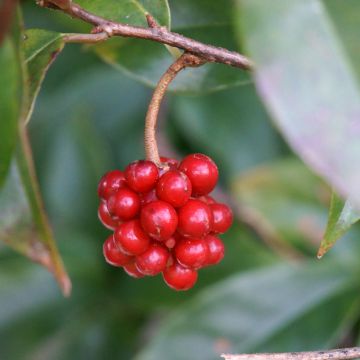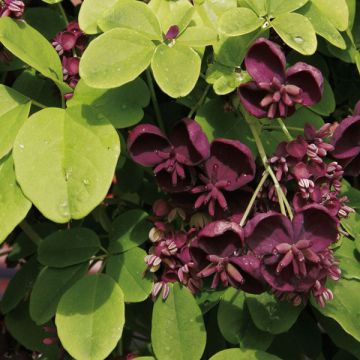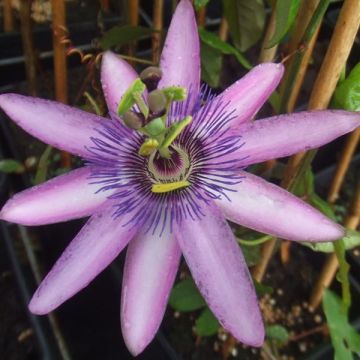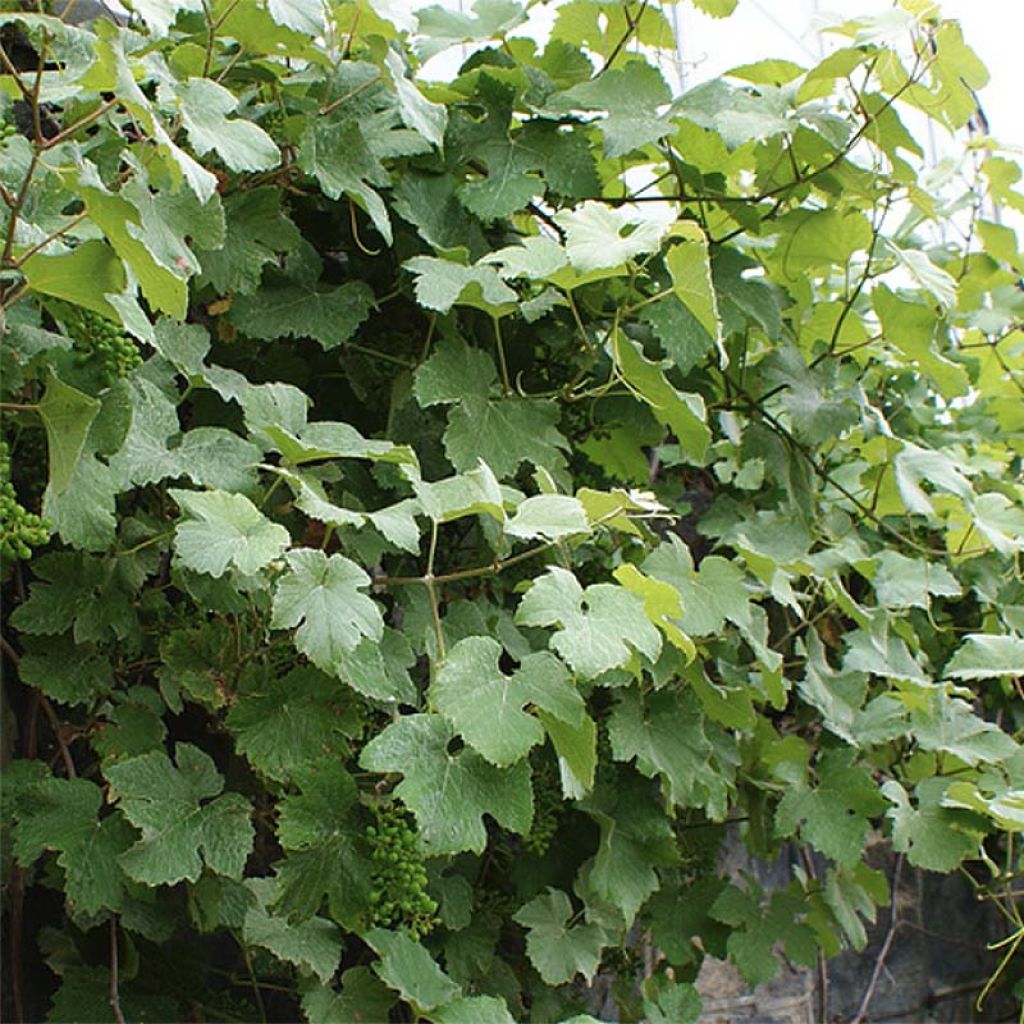

Vitis vinifera Incana - Ornamental Grape Vine
Vitis vinifera Incana - Ornamental Grape Vine
Vitis vinifera Incana
Common Grape Vine, European Grape, Wine Grape
Planted after one year: 2 buds are poking their noses out!!!
Thi, 11/04/2023
This item cannot be shipped to the selected country
Delivery charge from €5.90
Delivery to Corse prohibited
More information
Schedule delivery date,
and select date in basket
This plant carries a 6 months recovery warranty
More information
We guarantee the quality of our plants for a full growing cycle, and will replace at our expense any plant that fails to recover under normal climatic and planting conditions.
From €5.90 for pickup delivery and €6.90 for home delivery
Express home delivery from €8.90.
Delivery to Corse prohibited: UE law prohibits the import of this plant from mainland France to Corse as part of the fight against Xylella fastidiosa. Please accept our sincere apologies.
More information
Does this plant fit my garden?
Set up your Plantfit profile →
Description
The Vitis vinifera 'Incana' is a wonderful ornamental vine, beautiful for a good part of the year, vigorous and productive. It is distinguished by its ample soft green foliage covered in a silver down and its young leaves that are almost white. A peculiarity that allows for astonishing contrasts with dark or purple foliage. Like all wine vines, it climbs by clinging to its support through tendrils and produces small edible and tasty grapes at the end of summer. It catches attention again in autumn, adorned with magnificent red-orange shades. Hardy and undemanding, it thrives in the sun, in ordinary but well-drained soil, preferably neutral to limestone.
The wine vine (Vitis vinifera) grew wild more than 5000 years ago, it belongs to the vitaceae family. Its introduction in France, for cultivation, was done through the Romans. Many hybrids have been created to vary colours, flavours and uses. The 'Incana' vine is a vigorous climbing shrub, with rapid growth, capable of living very long years in the garden. This variety reaches an average height of 4.5 metres (15 feet), but can send its shoots up to 10 metres (33 feet) depending on the growing conditions. Its final shape will depend on the pruning practiced. The vine clings to its support (trellis, espalier) thanks to its tendrils and loves sunny situations. It has a semi-erect to horizontal habit. It is recommended to train it on wire and to trellis it well. The young shoots and young leaves are very silvery on 'Incana'. The mature leaves, rounded, 7 to 15 cm (3 to 6in) long, are divided into 3 toothed lobes. The lamina is light green in colour and covered with a silvery pubescence that is denser when the plant is exposed to the sun. The foliage turns red-orange in autumn before falling. The grapes are gathered in small clusters, tightly packed together. These round berries, initially green, ripen in September-October, earlier in sunny, hot regions. The flowering in clusters occurs in June-July, offering very small green and naked flowers. The small berries that follow are black-violet when ripe, with thick and pruinose skin. The pulp is flavorful, acidic and sweet.
Not very susceptible to mildew, this vine avoids repeated treatments. It is indifferent to soil types: not very greedy, it nevertheless prefers clay-limestone, rocky soils. 'Incana' climbs on any support available: it covers fences, climbs over hedges, reaches into bushes and trees, and quickly dresses up arbors and pergolas. Its silver colour particularly goes well with dark purple or very dark green foliage. For example, pair it with Vitis vinifera var. tinctoria, red from June, a 'Black Lace' elderberry, a purple hazelnut or a 'Royal Purple' Cotinus. The bright red stars of the climbing clematis 'Madame Julia Correvon' will be enhanced by the silver brilliance of the large leaves of the 'Incana' vine.
Grapes can be consumed as table fruit, fresh, but also in jam, jelly, fruit juice, pastries, and of course, after vinification, as wine or spirits. This 'Incana' variety, superb, intriguing, surprising, can also be trellised not far from the terrace, to have its beautiful clusters within reach.
Report an error about the product description
Vitis vinifera Incana - Ornamental Grape Vine in pictures
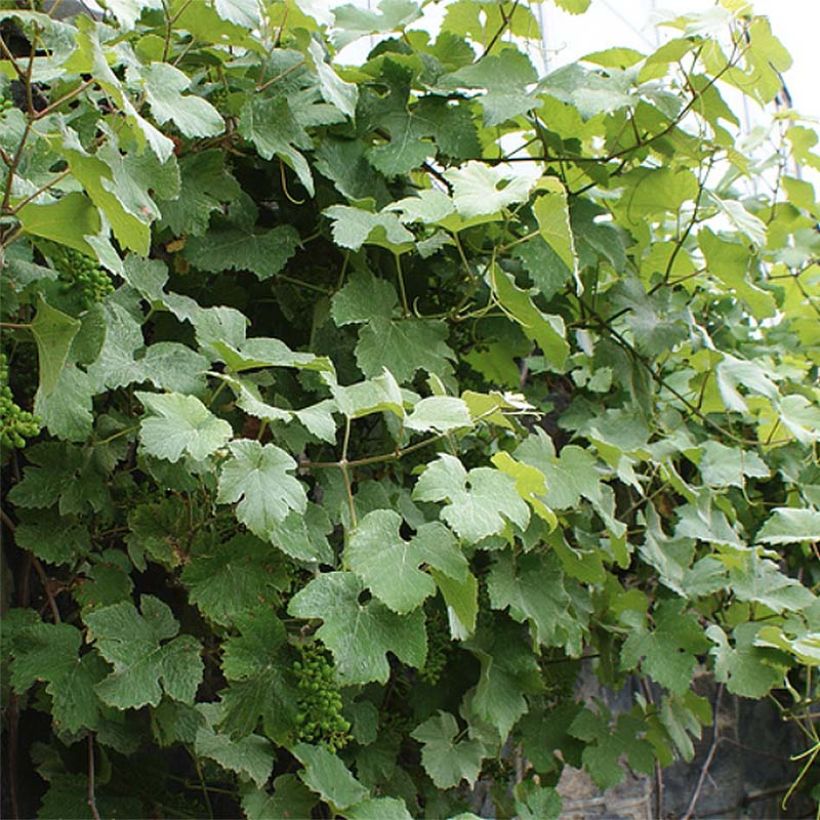

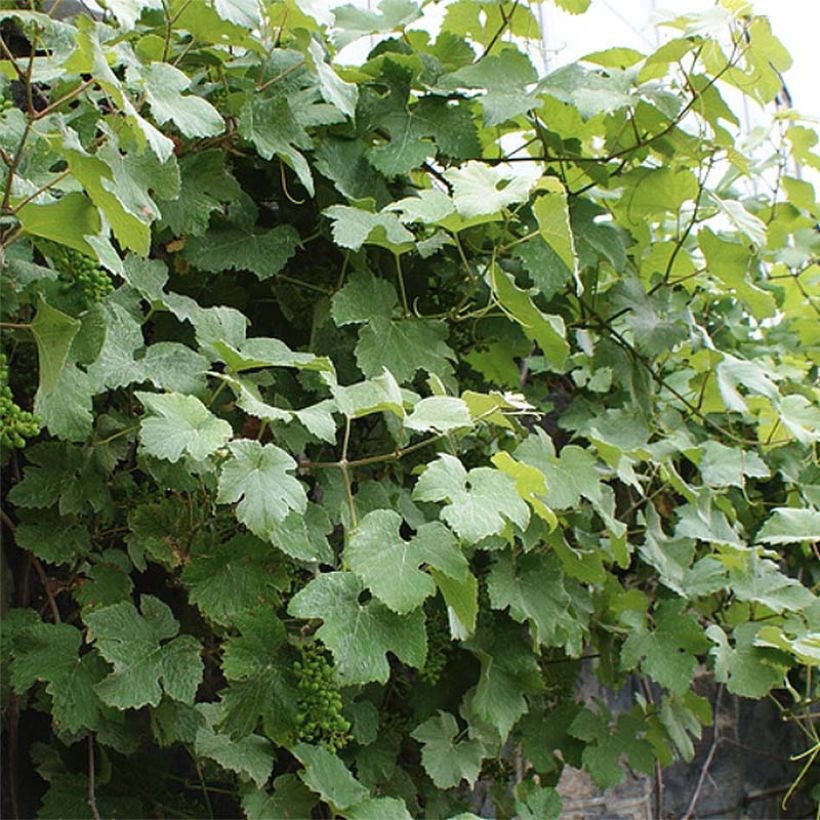

Plant habit
Flowering
Foliage
Botanical data
Vitis
vinifera
Incana
Vitaceae
Common Grape Vine, European Grape, Wine Grape
Cultivar or hybrid
Other Parthenocissus - Virginia Creeper
Planting and care
The Vitis vinifera 'Incana' should be planted in a regular and well-drained soil, neutral or calcareous, rather moist, that you have enriched with an organic fertiliser. Choose a semi-shade or sunny exposure, the silver colour will be more intense in full sun. It can withstand temperatures down to -15°C (5°F) and periods of drought in summer once it is well established. Prune it vigorously in February by cutting it back severely. Stake or train to support and guide the branches.
Planting period
Intended location
Care
-
, onOrder confirmed
Reply from on Promesse de fleurs
Unusual climbers
Haven't found what you were looking for?
Hardiness is the lowest winter temperature a plant can endure without suffering serious damage or even dying. However, hardiness is affected by location (a sheltered area, such as a patio), protection (winter cover) and soil type (hardiness is improved by well-drained soil).

Photo Sharing Terms & Conditions
In order to encourage gardeners to interact and share their experiences, Promesse de fleurs offers various media enabling content to be uploaded onto its Site - in particular via the ‘Photo sharing’ module.
The User agrees to refrain from:
- Posting any content that is illegal, prejudicial, insulting, racist, inciteful to hatred, revisionist, contrary to public decency, that infringes on privacy or on the privacy rights of third parties, in particular the publicity rights of persons and goods, intellectual property rights, or the right to privacy.
- Submitting content on behalf of a third party;
- Impersonate the identity of a third party and/or publish any personal information about a third party;
In general, the User undertakes to refrain from any unethical behaviour.
All Content (in particular text, comments, files, images, photos, videos, creative works, etc.), which may be subject to property or intellectual property rights, image or other private rights, shall remain the property of the User, subject to the limited rights granted by the terms of the licence granted by Promesse de fleurs as stated below. Users are at liberty to publish or not to publish such Content on the Site, notably via the ‘Photo Sharing’ facility, and accept that this Content shall be made public and freely accessible, notably on the Internet.
Users further acknowledge, undertake to have ,and guarantee that they hold all necessary rights and permissions to publish such material on the Site, in particular with regard to the legislation in force pertaining to any privacy, property, intellectual property, image, or contractual rights, or rights of any other nature. By publishing such Content on the Site, Users acknowledge accepting full liability as publishers of the Content within the meaning of the law, and grant Promesse de fleurs, free of charge, an inclusive, worldwide licence for the said Content for the entire duration of its publication, including all reproduction, representation, up/downloading, displaying, performing, transmission, and storage rights.
Users also grant permission for their name to be linked to the Content and accept that this link may not always be made available.
By engaging in posting material, Users consent to their Content becoming automatically accessible on the Internet, in particular on other sites and/or blogs and/or web pages of the Promesse de fleurs site, including in particular social pages and the Promesse de fleurs catalogue.
Users may secure the removal of entrusted content free of charge by issuing a simple request via our contact form.
The flowering period indicated on our website applies to countries and regions located in USDA zone 8 (France, the United Kingdom, Ireland, the Netherlands, etc.)
It will vary according to where you live:
- In zones 9 to 10 (Italy, Spain, Greece, etc.), flowering will occur about 2 to 4 weeks earlier.
- In zones 6 to 7 (Germany, Poland, Slovenia, and lower mountainous regions), flowering will be delayed by 2 to 3 weeks.
- In zone 5 (Central Europe, Scandinavia), blooming will be delayed by 3 to 5 weeks.
In temperate climates, pruning of spring-flowering shrubs (forsythia, spireas, etc.) should be done just after flowering.
Pruning of summer-flowering shrubs (Indian Lilac, Perovskia, etc.) can be done in winter or spring.
In cold regions as well as with frost-sensitive plants, avoid pruning too early when severe frosts may still occur.
The planting period indicated on our website applies to countries and regions located in USDA zone 8 (France, United Kingdom, Ireland, Netherlands).
It will vary according to where you live:
- In Mediterranean zones (Marseille, Madrid, Milan, etc.), autumn and winter are the best planting periods.
- In continental zones (Strasbourg, Munich, Vienna, etc.), delay planting by 2 to 3 weeks in spring and bring it forward by 2 to 4 weeks in autumn.
- In mountainous regions (the Alps, Pyrenees, Carpathians, etc.), it is best to plant in late spring (May-June) or late summer (August-September).
The harvesting period indicated on our website applies to countries and regions in USDA zone 8 (France, England, Ireland, the Netherlands).
In colder areas (Scandinavia, Poland, Austria...) fruit and vegetable harvests are likely to be delayed by 3-4 weeks.
In warmer areas (Italy, Spain, Greece, etc.), harvesting will probably take place earlier, depending on weather conditions.
The sowing periods indicated on our website apply to countries and regions within USDA Zone 8 (France, UK, Ireland, Netherlands).
In colder areas (Scandinavia, Poland, Austria...), delay any outdoor sowing by 3-4 weeks, or sow under glass.
In warmer climes (Italy, Spain, Greece, etc.), bring outdoor sowing forward by a few weeks.


































